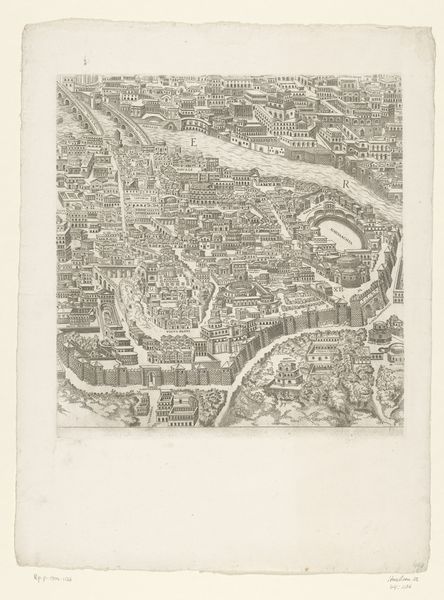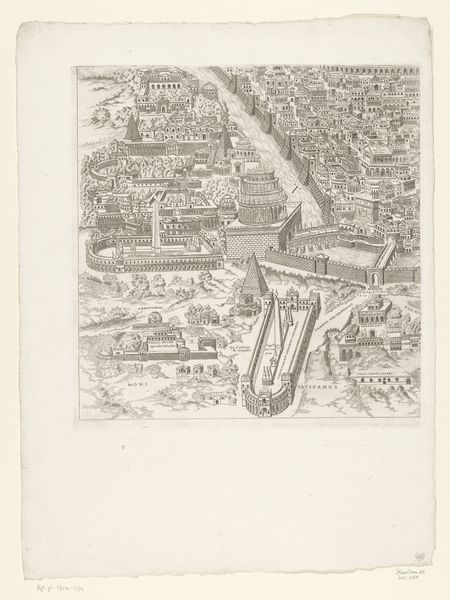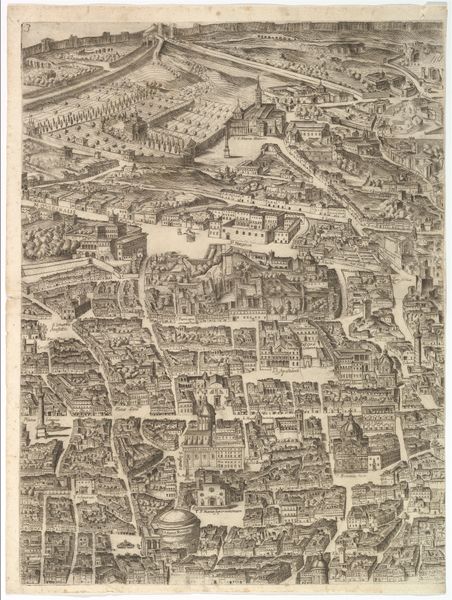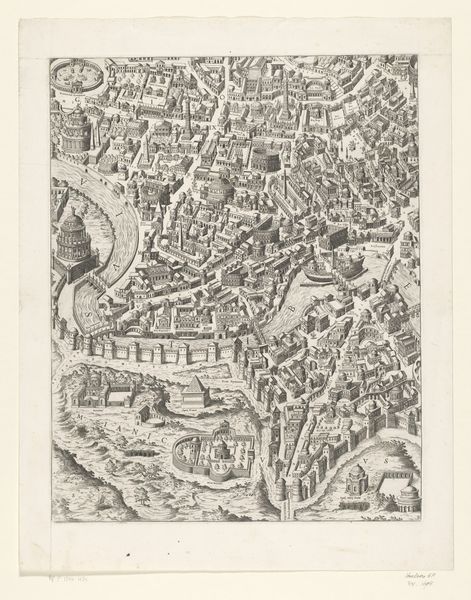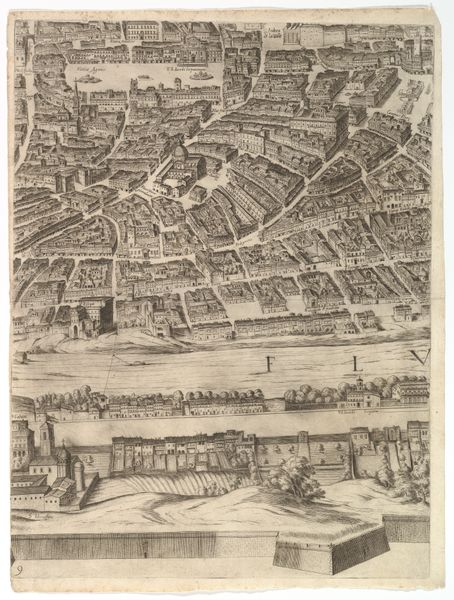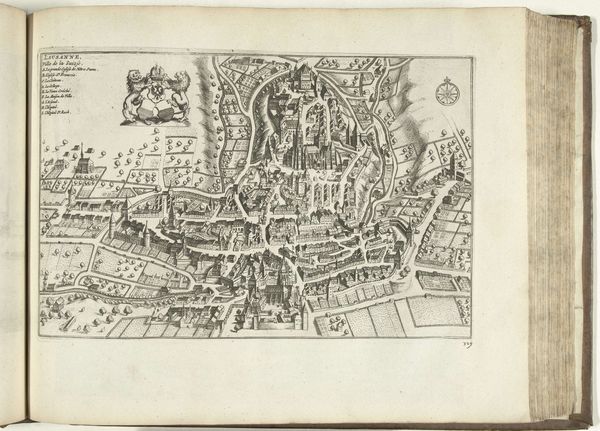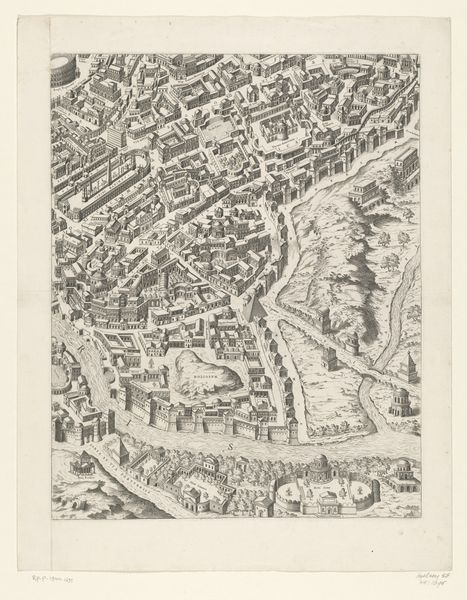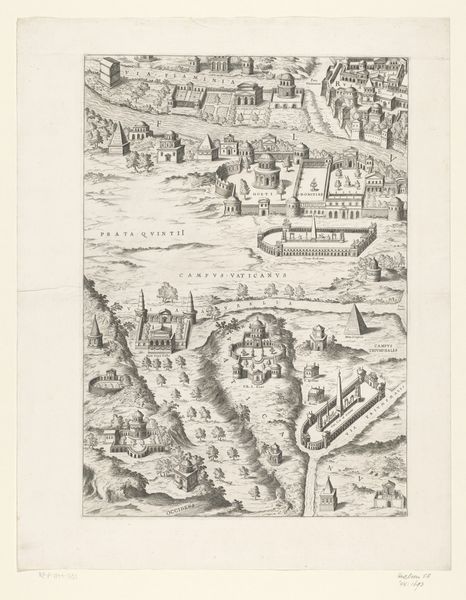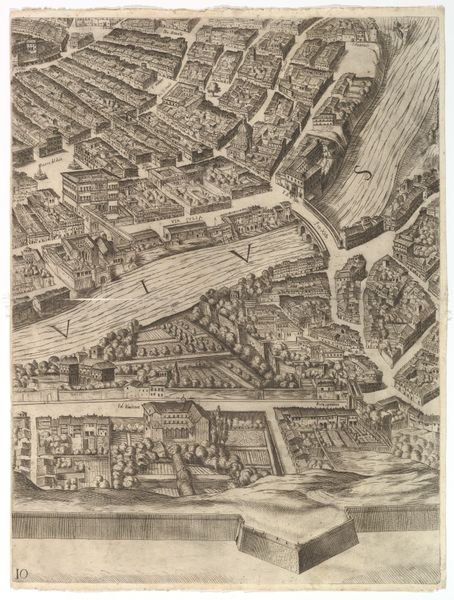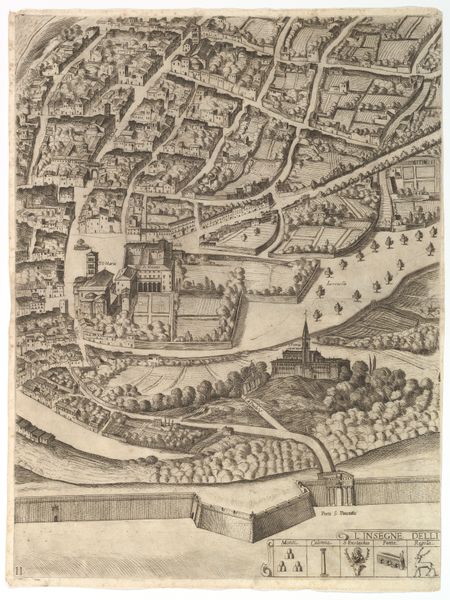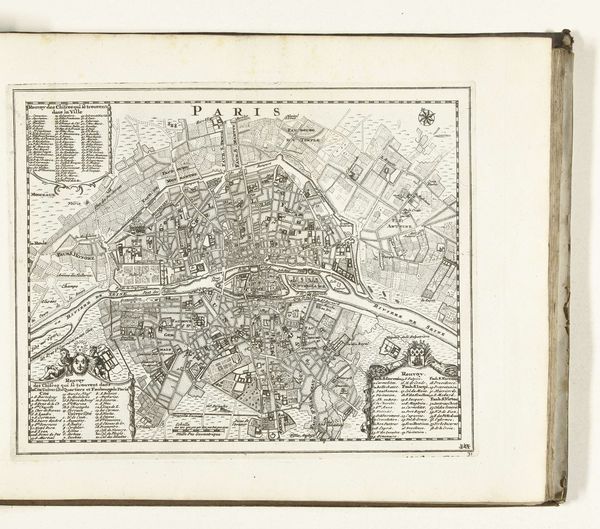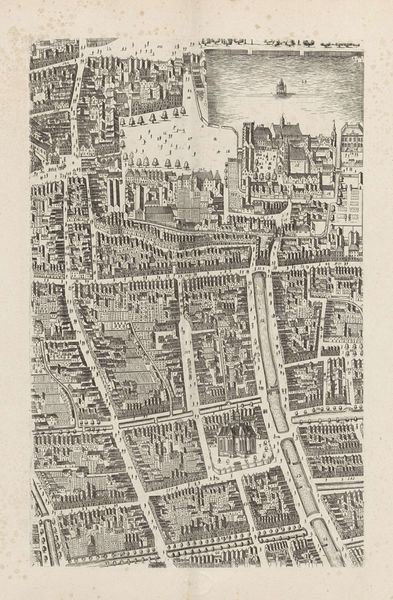
drawing, print, ink, engraving
#
drawing
#
neoclacissism
#
pen drawing
# print
#
classical-realism
#
perspective
#
form
#
ink
#
geometric
#
line
#
cityscape
#
engraving
Dimensions: height 493 mm, width 373 mm
Copyright: Rijks Museum: Open Domain
Curator: This print, titled "Plattegrond van Rome in de Romeinse tijd (vijfde deel)" dates back to 1773 and gives us a bird’s eye view of ancient Rome. What stands out to you most about it? Editor: Well, first, it's incredible how detailed it is, almost like looking at an architectural model. It’s really captivating to imagine how people lived in such a meticulously planned space. But it also feels…distant, almost clinical. What are your thoughts? Curator: I appreciate that observation. Indeed, the "clinical" aspect points towards the Enlightenment's obsession with order and reason. Consider how Neoclassicism, the movement to which this print belongs, revived classical forms not just aesthetically, but as symbols of societal organization and control. What does it tell us that 18th-century Europeans were so fascinated with meticulously mapping and documenting a past empire? Editor: It seems like they wanted to capture or perhaps control the past by turning it into something knowable and measurable. A way to legitimize their own power maybe? Curator: Exactly. And notice the perspective; the all-seeing "eye" implies a position of dominance, a way of visually "owning" the Roman Empire. What’s omitted from this rendering is also telling. Where are the common people, the messiness of daily life, or the voices of dissent? Editor: That's a great point. The image focuses on monumental architecture and clean lines, almost erasing the human element and its potential struggles. So, what was produced was not simply a depiction of the city, but an ideologically motivated one? Curator: Precisely. The engraving reflects a specific viewpoint rooted in the socio-political landscape of its time. By carefully examining such visual strategies, we start questioning whose story gets told, and how it shapes our understanding of history. Editor: It really shifts my perspective. I’ll never look at a historical map the same way again. Thanks for opening my eyes! Curator: It's been a pleasure, the exchange really made the artwork speak.
Comments
No comments
Be the first to comment and join the conversation on the ultimate creative platform.
